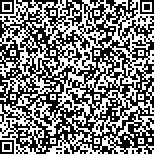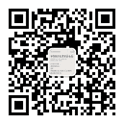| 引用本文:林雪莹,周罗林,刘浩辉,桑然,林智超,陈天柱,梁怀枫,龚瑜,李平.朋辈巴林特式小组对三年级长学制医学生共情能力的影响研究[J].中华医学教育探索杂志,2024,23(6):791-795 |
| 朋辈巴林特式小组对三年级长学制医学生共情能力的影响研究 |
| Study on the effect of Peer Balint-style group on empathy ability of third-year long-term medical students |
| DOI:10.3760/cma.j.cn116021-20220203-01789 |
| 中文关键词: 巴林特小组 朋辈教育 共情能力 医学人文 |
| 英文关键词:Balint group Peer education Empathy Medical humanities |
|
 |
| 基金项目:广东大学生科技创新培育专项资金(“攀登计划”专项资金)(pdjhb2020b0144);广东省中医药局科研项目(20223029) |
|
| 摘要点击次数: 85 |
| 全文下载次数: 51 |
| 中文摘要: |
| 目的 研究朋辈巴林特式小组对三年级长学制医学生共情能力的影响,为有效提升其人文素养提供理论和实践参考。方法 研究对象为90名本科三年级的长学制中医学生。在2019年6月至8月的临床实践期内,朋辈组长组织研究对象在各个实践基地开展朋辈巴林特式小组。在开展前后发放《大学生共情能力量表》进行测量,同一研究对象前测、后测的量表总分及各维度得分均符合正态分布,方差齐,采用(均数±标准差)的方式描述,利用SPSS 22.0对干预前后的总分和各维度得分进行配对t检验。临床实践期结束后对7名朋辈组长和组员进行半结构化访谈,访谈材料采用传统内容分析法分析。对同一受试对象前测、后测的量表总分及各维度得分进行配对t检验。结果 得到有效样本63份,共情能力后测总分(118.00±11.98)与前测总分(117.38±12.36)比较差异无统计学意义(t=-0.44,P=0.661,P>0.05),各维度中反向理解后测(9.06±1.97)较前测(8.57±2.15)得分上升,差异有统计学意义(t=-2.08,P=0.041,P>0.05)。质性研究内容经开放性编码获得10个分类,提示朋辈巴林特式小组的作用和不足。结论 朋辈巴林特式小组对医学生共情能力的提高可能具有积极作用,相较传统巴林特小组其覆盖面更广、亲和力更高、机动性更强,但该小组模式仍需进一步完善。 |
| 英文摘要: |
| Objective This study aimed to assess the effects of Peer Balint-style group on the empathy ability of third-year long-term medical students and to provide a theoretical and practical reference for effectively improving their humanistic quality.Methods Ninety third-year Chinese long-term medicine students participated. Volunteers received either ten sessions of 1.5-h Peer Balint-style group which were led by specially trained peers from June 2019 to August 2019. The College Students' Empathy Ability Questionnaire was used before the experiment and the second day after the experiment. The total score of the scale from the pre-test and post-test and the scores of each dimension conformed to a normal distribution, with equal variance, describing in the form of (x±s). Paired t-tests were performed to compare the total score and each dimension score before and after the intervention, using SPSS 22.0. Semi-structured interviews were conducted with 7 peer-group leaders and group members after the clinical practice period. The interview materials were analyzed by traditional content analysis. The content of the qualitative research was open-coded to obtain 10 categories, suggesting the role and inadequacy of Peer Balint-style groups.Results A total of 63 valid samples were obtained. There was no significant difference of (t=-0.44, P=0.661, P>0.05) between the total score of the post-test (118.00±11.98) and the total score of the pre-test (117.38±12.36). In each dimension, the reverse comprehension score of post-test (9.06±1.97) was significantly different (t=-2.08, P=0.041, P>0.05) from the pre-test's (8.57±2.15), which increased compared to the pre-test score.Conclusions Peer Balint-style group had a positive effect on improving empathy among medical students. Compared with the traditional Balint group, it has wider coverage, higher affinity and greater mobility. However, the design of the Peer Balint-style group still needs to be further improved. |
|
查看全文 查看/发表评论 下载PDF阅读器 |
|
| 关闭 |
|
|
|
